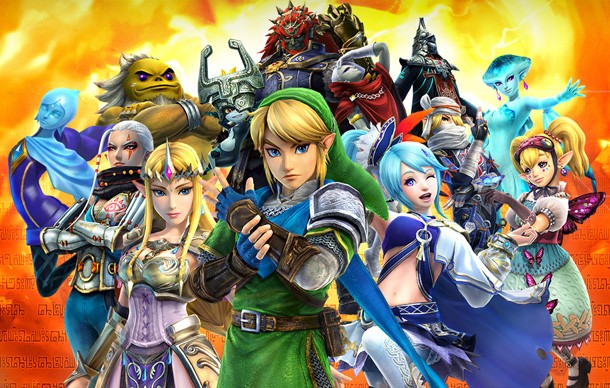Please support Game Informer. Print magazine subscriptions are less than $2 per issue
Hyrule Warriors Review

The Zelda series thrives on smart puzzle solving, exploration, and deliberate action against a small number of enemies. The Dynasty Warriors franchise thrives on none of these things. For this reason, Zelda fans are understandably skeptical about the franchise crossover, especially considering Nintendo’s last partnership with Team Ninja produced the worst Metroid game in the series, Other M. This time around, the partnership delivers better results. Hyrule Warriors isn’t a true Zelda game, but there’s plenty here for Zelda fans to enjoy.
Hyrule Warriors’ story begins with a dark power overtaking Hyrule, which cues the need for a hero – preferably one wearing a green tunic. From there, the alternate Zelda universes overlap in nerdy ways that fans who love to examine Zelda’s many timelines will appreciate. It fully embraces the idea of many Hyrules existing across multiple universes. The way characters speak to each other, however, is cheesy and serves to set up flimsy excuses to make recognizable characters fight one another for no particular reason.
The combat is highly repetitive, as is always the case with the Dynasty Warriors series, but the context of the Zelda universe made me much more interested in trudging through the war. In Dynasty Warriors, motivations for fighting are deeply embedded in an exaggerated history full of characters I’m unfamiliar with. When you don’t know or care why you’re fighting, fun needs to be derived entirely from the repetitive combat – which dulls quickly. Playing Hyrule Warriors, I was excited to meet every character; their motivations were clear, and I was eager to enter battle. That said, the combat still boils down to powering up your special attack, firing it off, and moving on to the next area to repeat the process in traditional Dynasty Warriors fashion.
Boss fights thankfully fall more in line with Zelda games. Using items like bombs, boomerangs, or arrows to open up a boss to a bevy of attacks is much more fun than whittling down a powerful soldier’s health. The final boss, in particular, forces you to use the lessons you’ve acquired through the course of the campaign to claim defeat in a satisfying way – a common trait of Zelda games, but unheard of in Dynasty Warriors.
Zelda references abound, whether it’s on the battlefield, or in the menus and loading screens. Events like using Fi to fight Ghirahim should resonate for players who finished Skyward Sword, and the way you use a powered-up hookshot to attack a strong moblin is too awesome to spoil here. It’s also nice to see a character like Zant from Twilight Princess, an awesome antagonist who it seemed would only ever appear in one game, get another chance to battle.
Among the plentiful Zelda references, most of the nods come from Ocarina of Time, Skyward Sword, and Twilight Princess. I would have liked to see more Zelda games receive more time in the spotlight. Only those three titles receive dedicated levels with familiar locations (often with the same layout). You revisit them frequently outside of the main campaign, which stifles the environmental variety.
Playing cooperatively with one player on the GamePad and one on the TV is great use of the Wii U’s technology, but you won’t find much forcing you to work as a team. Mostly it’s just helpful to have an extra fighter, but there’s something undeniably fun about teaming up as familiar Zelda warriors to tackle familiar enemies and bosses like The Imprisoned from Skyward Sword.
The standout Adventure mode, where you explore the original The Legend of Zelda map grid by grid, helps alleviate some of the repetition that drags down the main campaign. Each grid offers a short challenge, like having to defeat a boss or a certain type of enemy. Completing the challenge rewards you with weapons and items you can use on the overhead map, like a candle to burn a bush to get a new weapon, or a raft to cross a river to unlock more challenges. Adventure mode wears its love for Zelda on its sleeve, and unlike the main levels, which can be long and grueling, the challenges are typically short and sweet.
The repetition of Dynasty Warriors pervades throughout Hyrule Warriors, but this unexpected crossover with the Zelda universe works. It might not be the Zelda game we expected for Link’s first original Wii U debut, but it will happily hold us over while we wait for the console’s first true Legend of Zelda experience.





















